
News Directory
- 1. Introduction to Needle Roller Bearings
- 2. Types of Needle Roller Bearings
- 3. Applications of Needle Roller Bearings
- 4. Advantages and Disadvantages
- 5. Materials and Manufacturing
- 6. Installation and Maintenance
- 7. Common Problems and Troubleshooting
- 8. Future Trends in Needle Roller Bearing Technology
- Conclusion
Comprehensive understanding of needle roller bearings: What are the key points to grasp?
Understanding needle roller bearings is crucial for anyone involved in mechanical design, manufacturing, or maintenance. These specialized bearings offer unique advantages, particularly when dealing with heavy loads and limited space.
1. Introduction to Needle Roller Bearings
What are Needle Roller Bearings?
Needle roller bearings are a type of roller bearing that uses small-diameter cylindrical rollers. These rollers, known as "needles," have a length that is typically three to ten times their diameter. This design allows for a large number of rollers to be incorporated, maximizing contact area and enabling the bearing to handle significant radial loads within a compact cross-section. Unlike ball bearings, which use spherical rolling elements, or other roller bearings with larger cylindrical or tapered rollers, needle roller bearings are distinguished by their slender rollers.
Key Features and Benefits
Needle roller bearings offer a compelling combination of features that make them suitable for a wide range of applications:
-
High Load Capacity: Due to the large number of rolling elements and the line contact between the rollers and raceways, needle roller bearings can support substantial radial loads.
-
Compact Design: Their small radial cross-section is a major advantage, allowing them to be used in applications where space is limited. This compact size often translates to lighter and more streamlined designs.
-
Reduced Friction: The rolling motion of the needles minimizes friction, leading to higher efficiency and less heat generation compared to plain bearings.
-
High Rigidity: The large number of rolling elements provides good stiffness, which is important for applications requiring precise shaft guidance.
-
Cost-Effective: In many cases, needle roller bearings can be a more economical solution than other bearing types for similar load capacities, especially in mass production.
Comparison with Other Bearing Types
To better understand the unique position of needle roller bearings, let's compare them with other common bearing types:
| Feature | Needle Roller Bearings | Ball Bearings | Cylindrical Roller Bearings |
| Rolling Elements | Long, slender cylindrical rollers (needles) | Spherical balls | Shorter, larger-diameter cylindrical rollers |
| Load Capacity | Excellent radial load capacity, good for high loads | Good radial and axial load capacity | Very high radial load capacity |
| Space Efficiency | Highly compact radial cross-section, ideal for tight spaces | Generally larger radial cross-section than needle bearings for comparable loads | Larger radial cross-section than needle bearings |
| Friction | Low | Very low | Low |
| Rigidity | High | Moderate | High |
| Axial Load | Limited (typically none or very low, unless combined) | Good (especially deep groove ball bearings) | Limited (typically none) |
| Cost | Often cost-effective for high radial loads | Varies widely, can be economical | Can be higher than needle bearings for similar applications |
| Typical Use | Gearboxes, automotive, power tools, compressors | Electric motors, appliances, general machinery | Heavy industrial machinery, rolling mills |
2. Types of Needle Roller Bearings
Needle roller bearings come in various designs, each tailored for specific operational requirements and installation scenarios. Understanding these types is crucial for selecting the right bearing for your application.
Drawn Cup Needle Roller Bearings
Drawn cup needle roller bearings are characterized by their thin, drawn outer ring, which serves as a raceway for the needle rollers. This design makes them extremely compact and lightweight. They are often used without an inner ring, allowing the shaft itself to act as the inner raceway, further saving space. They can be found in open-ended or closed-end configurations, with the closed end providing protection against contaminants and retaining lubricant.
-
Key Features: Thin outer ring, compact design, high load capacity for their size, often used without an inner ring.
-
Advantages: Space-saving, cost-effective for high-volume applications, simple installation (press fit).
-
Limitations: Lower precision compared to machined types, can be sensitive to misalignment if not properly supported.
Machined Ring Needle Roller Bearings
In contrast to drawn cup bearings, machined ring needle roller bearings feature a thicker, precisely machined outer ring. This robust construction allows them to handle higher loads and operate at greater speeds. They are available with or without an inner ring and often incorporate ribs on the outer ring to retain the needle rollers.
-
Key Features: Machined outer ring, higher precision, greater rigidity, available with or without an inner ring.
-
Advantages: Higher load capacity and speed capabilities than drawn cup bearings, better precision and running accuracy, more robust.
-
Limitations: Larger radial cross-section than drawn cup bearings, generally higher cost.
Needle Roller Thrust Bearings
While most needle roller bearings excel in handling radial loads, needle roller thrust bearings are specifically designed to accommodate axial (thrust) loads. They consist of a thrust cage and needle rollers, often paired with thrust washers. These bearings provide a compact solution for applications requiring high axial load capacity in a small space.
-
Key Features: Designed for axial loads, compact axial height, high axial load capacity.
-
Advantages: Excellent for heavy axial loads where space is limited, low friction.
-
Limitations: Only handle axial loads, require flat and rigid adjacent surfaces for proper operation.
Combined Needle Roller Bearings
Combined needle roller bearings integrate both a radial needle roller bearing and a thrust bearing into a single unit. This ingenious design allows them to support both significant radial and axial loads simultaneously within a compact envelope. This reduces the number of components needed and simplifies assembly.
-
Key Features: Combines radial and axial load capabilities in one unit, compact overall design.
-
Advantages: Handles both radial and axial loads efficiently, space-saving by combining functions, simpler assembly.
-
Limitations: More complex design than single-function bearings, potentially higher cost.
Specific Use Cases for Each Type
The choice of needle roller bearing type heavily depends on the specific demands of the application. Here's a brief overview of typical use cases:
| Bearing Type | Common Applications | Key Benefit in Application |
| Drawn Cup Needle Roller | Automotive transmissions, power tools, lawn and garden equipment, bicycle components | Compactness and cost-effectiveness in high-volume production |
| Machined Ring Needle Roller | Gearboxes, industrial pumps, textile machinery, agricultural machinery | Higher precision and load capacity for demanding industrial use |
| Needle Roller Thrust | Automotive steering gears, jacks, industrial machinery thrust applications | Handling heavy axial loads in a thin profile |
| Combined Needle Roller | Machine tool spindles, automotive steering columns, robotics, indexing tables | Simultaneous handling of radial and axial loads in one unit |
3. Applications of Needle Roller Bearings
The unique characteristics of needle roller bearings—their high load capacity combined with a compact design—make them indispensable across a diverse range of industries. They are particularly well-suited for applications where space is at a premium but robust performance is still required.
Automotive Industry
The automotive industry is one of the largest consumers of needle roller bearings. Their ability to handle high loads in confined spaces is crucial for various vehicle components.
-
Transmissions: Needle roller bearings are extensively used in both manual and automatic transmissions, supporting gears and shafts to ensure smooth power transfer and reduce friction.
-
Engine Components: They can be found in valve trains, connecting rods, and crankshafts, where they manage high speeds and significant loads.
-
Steering Systems: In power steering pumps and steering columns, needle roller bearings contribute to precise control and reduced effort.
-
Drive Shafts and Differentials: Their compact nature allows for efficient design in these critical driveline components.
Industrial Equipment
From heavy machinery to precision instruments, industrial equipment relies on the durability and efficiency of needle roller bearings.
-
Gearboxes and Reducers: They are commonly integrated into industrial gearboxes to support shafts, providing high load capacity and rigidity in compact designs.
-
Pumps and Compressors: In these applications, needle roller bearings help maintain alignment and support rotating components under various pressure conditions.
-
Textile Machinery: The high speed and precision requirements of textile manufacturing benefit from the smooth operation and compact size of needle roller bearings.
-
Conveyor Systems: They support rollers and shafts in conveyor belts, ensuring reliable operation even with heavy loads.
Power Tools
The compact yet powerful nature of power tools makes needle roller bearings an ideal choice for their internal mechanisms.
-
Drills, Saws, and Grinders: Needle roller bearings are used in the gear trains and spindle assemblies of these tools to handle high speeds and impact loads, contributing to their durability and performance.
-
Cordless Tools: Their small size helps in designing compact and lightweight battery-powered tools.
Aerospace
In the aerospace industry, where weight and space are critical, needle roller bearings offer significant advantages.
-
Aircraft Actuators: They are used in various control surface actuators, landing gear mechanisms, and flap systems, where high reliability and load capacity in a small envelope are paramount.
-
Turbine Engines: While not primary bearings for main shafts, they can be found in auxiliary components and gearboxes within aircraft engines.
Robotics
The demanding requirements of robotics, including precise movement, high load capacity, and compact design, are well-met by needle roller bearings.
-
Robotic Arms and Joints: They are integrated into the joints and articulation points of robotic arms, enabling smooth, precise, and powerful movements while maintaining a compact form factor.
-
Actuators and Grippers: Their use in these components helps achieve the necessary force and control in a limited space.
Here’s a summary of typical applications for needle roller bearings:
| Industry/Sector | Common Applications | Key Advantage Provided by Needle Roller Bearings |
| Automotive | Transmissions, engine components, steering systems, drive shafts | High load capacity in compact spaces, durability |
| Industrial Equipment | Gearboxes, pumps, compressors, textile machinery, conveyor systems | Robust performance, space efficiency, high rigidity |
| Power Tools | Drills, saws, grinders, cordless tools | Compact size, ability to handle high speeds and impacts |
| Aerospace | Aircraft actuators, landing gear, flap systems, auxiliary engine parts | High reliability, lightweight, compact design |
| Robotics | Robotic arms, joints, actuators, grippers | Precision movement, high load capacity, compact form |
4. Advantages and Disadvantages
Needle roller bearings offer a unique set of advantages that make them highly valuable in specific applications, but they also come with certain limitations that need to be considered during the design phase. Understanding both sides is crucial for optimal bearing selection.
High Load Capacity
One of the most significant advantages of needle roller bearings is their remarkably high load capacity relative to their size. This is due to the large number of slender rollers, or "needles," which create a greater contact area between the rolling elements and the raceways compared to ball bearings or even other types of roller bearings with fewer, larger rollers. This extensive contact allows the load to be distributed over a larger surface, reducing stress concentrations and enabling the bearing to support substantial radial forces. This characteristic is particularly beneficial in applications where heavy loads must be accommodated within limited space.
Compact Design
The compact design of needle roller bearings is another major selling point. Their small radial cross-section, often achieved by using a thin-walled drawn outer cup or by having the shaft serve as the inner raceway, allows them to fit into tight spaces where other bearing types might be too large. This compactness can lead to several design benefits, including:
-
Smaller overall assembly size: Reducing the footprint of components.
-
Lighter weight: Contributing to energy efficiency and reduced material costs.
-
More streamlined designs: Allowing for greater design flexibility.
This makes them ideal for applications such as automotive transmissions, power tools, and robotics, where space efficiency is paramount.
Reduced Friction
Needle roller bearings are designed to provide reduced friction compared to plain bearings. The rolling motion of the needle rollers, as opposed to the sliding motion in plain bearings, inherently minimizes energy loss due to friction. This results in:
-
Higher operational efficiency: Less energy is wasted as heat, leading to more power transmitted to the intended function.
-
Lower heat generation: This can extend lubricant life and prevent damage to surrounding components.
-
Longer bearing life: Reduced friction means less wear on the bearing components.
While not as low as some deep groove ball bearings, the friction in needle roller bearings is still very low and highly beneficial for many high-speed and continuous operation applications.
Limitations and Considerations
Despite their numerous advantages, needle roller bearings do have certain limitations that must be taken into account:
-
Limited Axial Load Capacity: Most standard needle roller bearings are designed primarily for radial loads and have very limited, if any, capacity to support axial (thrust) loads. For applications requiring both radial and axial support, combined needle roller bearings or separate thrust bearings are necessary.
-
Sensitivity to Misalignment: Due to their long, slender rollers and line contact, needle roller bearings can be sensitive to significant shaft misalignment. Excessive misalignment can lead to edge loading on the rollers, premature wear, and reduced bearing life. Proper alignment during installation is critical.
-
Shaft Hardness Requirements (for bearings without inner rings): When a needle roller bearing is used without an inner ring, the shaft surface itself acts as the inner raceway. For optimal performance and longevity, this shaft surface must be sufficiently hardened and ground to meet specific hardness and surface finish specifications. If not, rapid wear of the shaft can occur.
-
Contamination Sensitivity: Like all precision bearings, needle roller bearings can be sensitive to contamination from dirt, dust, and other foreign particles. Proper sealing and lubrication practices are essential to prevent premature failure.
Here's a summary of the key advantages and disadvantages:
| Advantage | Description |
| High Load Capacity | Can support significant radial loads due to the large number of rolling elements and extensive contact area. |
| Compact Design | Small radial cross-section allows for use in applications with limited space, leading to smaller, lighter assemblies. |
| Reduced Friction | Rolling motion minimizes energy loss, leading to higher efficiency, less heat generation, and longer life. |
| Disadvantage | Description |
| Limited Axial Load Capacity | Primarily designed for radial loads; typically require additional components for significant axial support. |
| Sensitivity to Misalignment | Can experience premature wear or failure if not properly aligned during installation. |
| Shaft Hardness Requirements | If no inner ring is used, the shaft surface must be hardened and precisely finished to serve as an effective raceway. |
| Contamination Sensitivity | Susceptible to damage from dirt and foreign particles, necessitating good sealing and lubrication. |
5. Materials and Manufacturing
The performance, durability, and reliability of needle roller bearings are intrinsically linked to the materials used in their construction and the precision of their manufacturing processes. High-quality materials and stringent quality control are essential to ensure these bearings can withstand the demanding conditions they operate in.
Materials Used in Needle Roller Bearings
The selection of materials for needle roller bearings is critical, as each component needs to resist wear, fatigue, and corrosion while maintaining dimensional stability under various operating temperatures and loads.
-
Bearing Steel (Chrome Steel - GCr15 / 52100): This is the most common material for the raceways (inner and outer rings) and the needle rollers themselves. High-carbon chromium bearing steel (e.g., AISI 52100 in the USA, GCr15 in China) is favored for its excellent hardness, wear resistance, and fatigue life after appropriate heat treatment. This steel allows for precision grinding and honing, which are crucial for the smooth operation and longevity of the bearing.
-
Case Hardened Steel: For certain applications, especially drawn cup outer rings or larger machined rings, case-hardened steel might be used. This involves a process where the surface of the steel is hardened while the core remains tougher, providing a good balance of hardness for wear resistance and toughness to handle shock loads.
-
Cage Materials (Steel, Polyamide, Brass):
-
Pressed Steel: Cages are often made from pressed steel, offering high strength and rigidity, suitable for demanding applications.
-
Polyamide (Nylon): Plastic cages, typically made from glass-fiber reinforced polyamide, are lightweight, can operate at higher speeds, and are often quieter. They also have good self-lubricating properties in certain conditions. However, their temperature limits are lower than metal cages.
-
Machined Brass: For very high-speed applications or those requiring superior chemical resistance, machined brass cages are sometimes used. They offer good strength and excellent guidance for the rollers.
-
-
Ceramics (Silicon Nitride - Si3N4): While less common for the main rolling elements in standard needle roller bearings due to cost, advanced applications, particularly those requiring electrical insulation, higher speeds, or extreme temperatures, might incorporate ceramic elements (e.g., silicon nitride) into hybrid bearings. These offer benefits like lower density, higher hardness, and better temperature resistance.
Manufacturing Processes
The production of needle roller bearings involves a series of precise and tightly controlled manufacturing processes to achieve the necessary dimensional accuracy, surface finish, and material properties.
-
Material Preparation: Raw materials are typically supplied as steel bars or tubes, which are then cut to size.
-
Forming (Forging/Stamping/Drawing):
-
Rings: Bearing rings can be forged (for machined rings) or deep-drawn (for drawn cups) to create their initial shape.
-
Rollers: Needle rollers are typically cold-headed or ground from wire.
-
-
Heat Treatment: This is a critical step where the steel components (rings and rollers) undergo processes like hardening and tempering. This precisely controlled heating and cooling transform the material's microstructure, imparting the desired hardness, strength, and toughness.
-
Grinding and Honing: After heat treatment, the raceway surfaces of the rings and the surfaces of the rollers are meticulously ground and then honed to achieve an extremely fine surface finish and precise dimensions. This accuracy is vital for smooth operation, low friction, and extended bearing life.
-
Assembly: The rollers are then assembled with the cage (if present) and the inner and outer rings. For drawn cup bearings, the rollers are often pre-assembled into the cup.
-
Inspection and Quality Control: Throughout the entire manufacturing process, rigorous quality control measures are implemented. This includes:
-
Dimensional inspection: Checking critical dimensions, tolerances, and runout.
-
Hardness testing: Verifying the effectiveness of heat treatment.
-
Surface finish measurement: Ensuring optimal contact surfaces.
-
Noise and vibration testing: Assessing the bearing's operational smoothness.
-
Visual inspection: Detecting any surface defects.
-
Quality Control
Quality control is paramount in needle roller bearing manufacturing. It's not just a final check but an integrated part of every stage, from raw material inspection to the finished product.
-
Statistical Process Control (SPC): Manufacturers often employ SPC techniques to monitor and control the manufacturing process in real-time, identifying and correcting deviations before they lead to defective products.
-
Traceability: Components are often traceable back to their raw material batches and manufacturing dates, allowing for quick investigation in case of any issues.
-
Adherence to Standards: Bearings are manufactured according to international standards (e.g., ISO, ABMA, DIN) to ensure interchangeability and consistent performance globally.
Here's a summary of the materials and manufacturing process for needle roller bearings:
| Component | Common Materials | Primary Manufacturing Processes | Key Quality Aspect |
| Rings | High-carbon chromium bearing steel (GCr15/52100), Case hardened steel | Forming (forging/drawing), Heat Treatment, Grinding, Honing | Hardness, Dimensional Accuracy, Surface Finish, Roundness |
| Needle Rollers | High-carbon chromium bearing steel (GCr15/52100) | Forming (cold-heading/grinding), Heat Treatment, Grinding, Superfinishing | Hardness, Diameter Uniformity, Cylindricity, Surface Roughness |
| Cages | Pressed Steel, Polyamide (Nylon), Machined Brass | Stamping/Pressing (Steel), Injection Molding (Polyamide), Machining (Brass) | Strength, Dimensional Accuracy, Roller Retention |
6. Installation and Maintenance
Proper installation and maintenance are paramount to maximizing the lifespan and performance of needle roller bearings. Even the highest quality bearing can fail prematurely if not handled, installed, and lubricated correctly. Adhering to best practices ensures optimal operation and reduces downtime.
Proper Installation Techniques
Correct installation is the first critical step in ensuring a bearing's long and reliable service life. Misalignment, improper seating, or damage during installation are common causes of early bearing failure.
-
Cleanliness is Key: Always work in a clean environment. Even small particles of dirt or debris can contaminate the bearing, leading to wear and premature failure. Ensure hands, tools, and the surrounding workspace are free of contaminants.
-
Use the Right Tools: Never use a hammer directly on the bearing rings or rolling elements. This can cause brinelling (dents), cracks, or deformation. Instead, use specialized bearing installation tools, such as bearing fitting tools or hydraulic presses, that apply force evenly to the appropriate ring (usually the one being pressed).
-
Heat for Inner Ring Installation (if applicable): When installing an inner ring onto a shaft, gentle heating of the inner ring (e.g., using an induction heater or heating cabinet) can expand it, making installation easier and preventing damage to both the bearing and the shaft. Never exceed the manufacturer's recommended temperature.
-
Cold for Outer Ring Installation (if applicable): Conversely, for outer rings that need to be pressed into a housing, cooling the housing or the outer ring can facilitate assembly.
-
Check Alignment: After installation, verify that the bearing is properly aligned and seated squarely in its housing or on the shaft. Misalignment can lead to uneven load distribution and excessive wear.
-
Do Not Over-force: Apply only the necessary force for installation. Excessive force can damage the bearing's internal components.
Lubrication Guidelines
Lubrication is the lifeblood of a bearing, reducing friction, preventing wear, and dissipating heat. The correct lubricant type, quantity, and re-lubrication intervals are crucial.
-
Grease vs. Oil:
-
Grease: Often preferred for its simplicity, good sealing properties, and ability to stay in place. It's suitable for most applications, especially those with moderate speeds and temperatures. Select a grease with appropriate consistency (NLGI grade) and base oil viscosity for the operating conditions.
-
Oil: Used for higher speeds, higher temperatures, or when heat dissipation is critical. Oil can also provide better cooling and flushing of contaminants. Oil lubrication can be splash, circulating, or oil mist.
-
-
Lubricant Type and Viscosity: Always refer to the bearing manufacturer's recommendations and the application's operating conditions (speed, temperature, load) to select the appropriate type and viscosity of lubricant. Using the wrong lubricant can lead to rapid wear or failure.
-
Correct Quantity:
-
Grease: Over-greasing can lead to excessive heat generation due to churning, while under-greasing causes friction and wear. A common guideline for grease fill is 30-50% of the bearing's free internal space.
-
Oil: Maintain the correct oil level as specified by the equipment manufacturer.
-
-
Re-lubrication Intervals: Lubricants degrade over time and through operation. Establish a re-lubrication schedule based on the bearing type, lubricant type, operating temperature, speed, load, and environmental conditions. Advanced condition monitoring techniques can help optimize these intervals.
-
Clean Lubricant: Always use clean lubricant. Store lubricants properly to prevent contamination, and use clean dispensing tools. Contaminated lubricant is a leading cause of bearing damage.
Preventative Maintenance
Beyond installation and lubrication, a proactive approach to maintenance can significantly extend bearing life and prevent unexpected breakdowns.
-
Regular Inspections: Periodically inspect bearings for signs of wear, unusual noise, excessive heat, or lubricant leakage. Early detection of problems can prevent catastrophic failures.
-
Vibration Analysis: For critical machinery, vibration analysis can detect early signs of bearing damage before they become apparent through other means. Changes in vibration patterns often indicate developing issues.
-
Temperature Monitoring: Excessive operating temperature is a strong indicator of bearing distress (e.g., lack of lubrication, overloading, or damage). Regular temperature checks (e.g., using infrared thermometers) can provide valuable insights.
-
Lubricant Analysis: For large or critical applications, periodic lubricant analysis can reveal the presence of wear particles, water, or other contaminants, indicating bearing or system health issues.
-
Environmental Protection: Ensure proper sealing and protection against contaminants like dust, moisture, and corrosive substances, especially in harsh operating environments.
Here's a summary of key installation and maintenance points:
| Category | Key Actions and Considerations | Benefits of Proper Execution |
| Installation | Cleanliness, correct tools, proper force (heating/cooling), alignment verification | Prevents early failure, ensures optimal performance, extends lifespan |
| Lubrication | Selecting right type (grease/oil), correct viscosity, appropriate quantity, scheduled re-lubrication, clean lubricant | Reduces friction, prevents wear, dissipates heat, extends lubricant and bearing life |
| Preventative Maintenance | Regular inspections, vibration analysis, temperature monitoring, lubricant analysis, environmental protection | Early detection of issues, prevents costly breakdowns, maximizes uptime |
7. Common Problems and Troubleshooting
Even with proper installation and meticulous maintenance, needle roller bearings can eventually exhibit signs of wear or failure due to various factors. Identifying these issues early and understanding their root causes is crucial for effective troubleshooting, preventing further damage, and minimizing downtime.
Identifying Bearing Failure
Recognizing the symptoms of a failing bearing is the first step in addressing the problem. These signs often become more pronounced as the failure progresses.
-
Noise: This is one of the most common indicators. A healthy bearing operates quietly.
-
Growling or Rumbling: Often indicates general wear or surface damage to raceways or rollers.
-
Squealing or Chirping: Can suggest insufficient lubrication or contaminated lubricant.
-
Clicking or Tapping: May point to localized damage like brinelling, spalling, or a broken cage.
-
-
Vibration: Increased vibration levels are a strong sign of bearing distress. This can be felt by hand or, more accurately, detected with vibration analysis equipment.
-
Roughness: A general feeling of unevenness in rotation.
-
Specific Frequencies: Advanced vibration analysis can pinpoint the exact component (inner ring, outer ring, rollers, cage) that is damaged.
-
-
Excessive Heat: Bearings naturally generate some heat, but excessive temperatures indicate a problem.
-
Overheating: Could be due to insufficient lubrication, incorrect lubricant type, over-greasing (churning), overloading, or misalignment.
-
Discoloration: Overheating can lead to discoloration of bearing components.
-
-
Increased Friction/Power Consumption: As a bearing deteriorates, its internal friction increases, leading to higher power consumption for the same load.
-
Visible Damage:
-
Spalling/Flaking: Pieces of metal breaking off the raceway or rollers, indicating fatigue failure.
-
Pitting: Small depressions on the surfaces.
-
Brinelling: Indentations caused by static overload or impact.
-
Scoring/Smearing: Rough, smeared surface areas often due to poor lubrication or excessive sliding.
-
Corrosion/Rust: Reddish-brown discoloration from moisture ingress.
-
Cage Damage: Bent, cracked, or broken cages.
-
-
Lubricant Contamination or Degradation: Discolored, gritty, or excessively hot lubricant can indicate bearing issues or contribute to them.
Causes of Failure
Understanding the underlying causes of bearing failure is essential for implementing corrective and preventative measures. Most failures are not due to manufacturing defects but rather to external factors.
-
Improper Lubrication:
-
Insufficient Lubrication: The most common cause of failure, leading to metal-to-metal contact, increased friction, heat, and wear.
-
Incorrect Lubricant Type/Viscosity: Using a lubricant not suited for the operating conditions (temperature, speed, load) can cause premature wear.
-
Contaminated Lubricant: Dirt, water, or other debris in the lubricant can cause abrasive wear, corrosion, and accelerate fatigue.
-
Over-greasing: Can lead to churning and excessive heat generation, degrading the lubricant.
-
-
Improper Mounting/Installation:
-
Misalignment: Shafts or housings not properly aligned can cause uneven loading across the bearing, leading to localized stress and premature fatigue.
-
Incorrect Fit (Too Loose/Too Tight): A loose fit can cause fretting corrosion, while an overly tight fit can reduce internal clearance, leading to overheating and early fatigue.
-
Damage During Installation: Using incorrect tools or excessive force can cause brinelling, cracks, or deformation.
-
-
Overloading: Exceeding the bearing's dynamic or static load ratings can cause accelerated fatigue, plastic deformation (brinelling), or fracture.
-
Contamination: External contaminants (dust, grit, moisture) entering the bearing can cause abrasive wear, indentations, and corrosion, leading to spalling.
-
Fatigue: Over time, under cyclic loading, the bearing material can develop microscopic cracks that propagate, leading to spalling or flaking of the raceway or roller surfaces. This is a natural end-of-life failure mode, but it can be accelerated by other factors.
-
Corrosion: Presence of water or corrosive chemicals can lead to rust and pitting on bearing surfaces, severely impacting performance and life.
-
Fretting Corrosion: Occurs in bearings with a loose fit, where small relative movements between the bearing ring and shaft/housing cause surface oxidation and wear, often appearing as reddish-brown discoloration.
-
Vibration and Brinelling (False Brinelling): If a bearing is subjected to vibration while stationary or under very small oscillatory movements, the rolling elements can cause indentations (false brinelling) on the raceways due to localized lubricant displacement and subsequent metal-to-metal contact.
Troubleshooting Tips
When a bearing problem is suspected, a systematic approach to troubleshooting can help pinpoint the cause and determine the best course of action.
-
Listen and Observe: Pay attention to unusual noises, excessive heat, or changes in machinery operation.
-
Check Lubrication:
-
Verify lubricant level and condition. Is it clean? Is there enough? Is it the correct type?
-
Check for signs of lubricant leakage.
-
Adhere to re-lubrication schedules.
-
-
Inspect Externally: Look for visible signs of damage, corrosion, or contamination around the bearing seals.
-
Monitor Temperature: Use a thermometer to measure the bearing housing temperature. Compare it to normal operating temperatures.
-
Vibration Analysis (if available): Use specialized equipment to get a precise diagnosis of the bearing condition and identify the damaged component.
-
Review Operating Conditions: Ensure the bearing is not being overloaded or operating beyond its speed limits. Check for misalignment in the system.
-
Consider the Environment: Assess if external contaminants or corrosive elements are entering the bearing.
-
Disassembly and Examination (if necessary): If the problem persists, careful removal and visual inspection of the bearing components can reveal the exact nature of the failure (e.g., spalling patterns, roller damage, cage wear). Document all observations.
-
Consult Manufacturer: If uncertain about the cause or solution, consult the bearing manufacturer's technical support.
| Symptom | Potential Causes | Troubleshooting Steps |
| Noise | General wear, contamination, insufficient lubrication, localized damage, misalignment | Check lubrication, inspect for visible damage, monitor vibration/temp |
| Excessive Vibration | Damage (spalling, brinelling), misalignment, unbalance, loose fit, contamination | Perform vibration analysis, check alignment, inspect bearing condition |
| Overheating | Insufficient lubrication, incorrect lubricant, overloading, over-greasing, misalignment | Check lubricant, reduce load, ensure proper installation/alignment |
| Visible Damage | Improper installation, contamination, overloading, corrosion, fatigue | Inspect for type of damage (spalling, brinelling, rust), determine root cause |
| Short Bearing Life | Any of the above causes, often a combination of factors | Comprehensive review of installation, lubrication, and operating conditions |
8. Future Trends in Needle Roller Bearing Technology
The world of needle roller bearings is not static. As industries evolve and demand for higher performance, greater efficiency, and enhanced sustainability grows, so too does the innovation in bearing technology. Future trends are focused on pushing the boundaries of material science, integrating smart capabilities, and minimizing environmental impact.
Advancements in Materials
The continuous search for better materials is a cornerstone of bearing innovation. These advancements aim to improve durability, reduce friction, and enable operation in more extreme environments.
-
Advanced Steels: While traditional bearing steels are highly effective, research continues into new alloys that offer even greater fatigue life, enhanced corrosion resistance, or higher hardness without compromising toughness. This includes steels with finer microstructures or specialized heat treatments.
-
Coatings: Applying advanced coatings to raceway surfaces or rolling elements is gaining traction. These coatings, such as DLC (Diamond-Like Carbon) or ceramic coatings, can significantly reduce friction, improve wear resistance, and provide electrical insulation, extending bearing life in challenging conditions.
-
Hybrid Materials: The use of hybrid bearings, which combine traditional steel rings with ceramic rolling elements (e.g., silicon nitride balls in ball bearings, or potentially ceramic needle rollers in specialized applications), offers benefits like higher speed capability, reduced friction, greater stiffness, and electrical insulation. While currently more niche for needle rollers due to design complexities, the concept is advancing.
-
Polymer and Composite Cages: Development of new polymer and composite materials for cages focuses on improving strength-to-weight ratio, temperature resistance, and reducing friction, leading to quieter operation and higher speeds.
Smart Bearings
The concept of "smart" components is transforming industrial machinery, and bearings are no exception. Integrating sensors and connectivity into bearings allows for real-time monitoring and predictive maintenance.
-
Integrated Sensors: Future needle roller bearings may come equipped with tiny, embedded sensors capable of monitoring critical parameters such as:
-
Temperature: Detecting overheating before it leads to failure.
-
Vibration: Identifying early signs of wear or damage patterns.
-
Lubrication Condition: Assessing lubricant quality and level.
-
Load: Providing real-time feedback on actual operational stresses.
-
-
Data Analytics and AI: The data collected by these smart bearings can be transmitted wirelessly to central systems. Advanced data analytics and artificial intelligence (AI) algorithms can then process this information to:
-
Predict Remaining Useful Life (RUL): Shifting from reactive maintenance to true predictive maintenance.
-
Optimize Maintenance Schedules: Scheduling interventions precisely when needed, reducing unnecessary downtime and costs.
-
Diagnose Problems: Automatically identifying the root cause of issues, enabling faster and more accurate repairs.
-
Improve System Design: Providing valuable insights into actual operating conditions, feeding back into design improvements for future machinery.
-
-
Self-Lubricating and Adaptive Systems: While still largely in research, concepts include bearings that can sense their own lubrication needs and dispense lubricant, or even adjust their internal characteristics in response to changing operating conditions.
Sustainability
Sustainability is a growing concern across all industries, and bearing manufacturers are responding by focusing on more environmentally friendly practices and products.
-
Energy Efficiency: Designing bearings with even lower friction and improved rolling characteristics contributes to reduced energy consumption in the machinery they support. This translates to lower power bills and a smaller carbon footprint.
-
Recyclable Materials: Efforts are being made to increase the use of easily recyclable materials in bearing components, particularly for cages and seals.
-
Eco-Friendly Lubricants: The development and wider adoption of biodegradable and non-toxic lubricants reduce environmental contamination risks.
-
Extended Product Lifespan: By improving bearing durability and enabling predictive maintenance, the overall lifespan of bearings is extended. This reduces the frequency of replacement, leading to less material consumption and waste generation.
-
Optimized Manufacturing Processes: Manufacturers are continually looking for ways to reduce water and energy consumption, minimize waste, and control emissions during the production of bearings.
Here's a summary of the future trends shaping needle roller bearing technology:
| Trend Category | Key Developments | Impact on Bearings/Applications |
| Advancements in Materials | Advanced steels, specialized coatings (DLC), hybrid materials (ceramics), new polymer composites | Increased durability, lower friction, higher speed/temp limits, reduced wear |
| Smart Bearings | Integrated sensors (temp, vibration, lube), data analytics, AI-driven diagnostics | Predictive maintenance, optimized operation, reduced downtime, enhanced reliability |
| Sustainability | Improved energy efficiency, recyclable materials, eco-friendly lubricants, extended lifespan, optimized manufacturing | Lower operating costs, reduced environmental impact, less waste, resource conservation |
Conclusion
Needle roller bearings are far more than just simple machine components; they are critical engineering marvels that enable efficiency, compactness, and high performance across a vast array of industries. Our exploration has delved into their fundamental characteristics, diverse types, widespread applications, and the crucial aspects of their maintenance and future development.
Recap of Key Points
We've covered several essential takeaways regarding needle roller bearings:
-
Compact Strength: Their defining feature is the ability to handle high radial loads within an exceptionally small radial cross-section, making them indispensable where space is at a premium.
-
Diverse Designs: From drawn cup for cost-effective compactness to machined ring for higher precision and load, thrust for axial forces, and combined for integrated radial and axial support, there's a needle roller bearing type tailored for nearly every specific need.
-
Widespread Utility: Their applications span from the intricate mechanisms within automotive transmissions and power tools to the robust demands of industrial machinery, the precision of aerospace components, and the complex movements of robotics.
-
Strategic Advantages: Their benefits include high load capacity, compact design, and reduced friction, which contribute to overall system efficiency and longevity. However, designers must be mindful of their limited axial load capacity (for most types) and sensitivity to misalignment.
-
Precision Engineering: The performance of these bearings is heavily reliant on the advanced materials (like high-carbon chromium steel) and meticulous manufacturing processes (heat treatment, grinding, honing) that ensure their durability and accuracy.
-
Critical Care: Proper installation—emphasizing cleanliness, correct tools, and alignment—and diligent maintenance—especially appropriate lubrication and proactive monitoring—are not just recommendations, but necessities for achieving the bearings' full service life.
-
Proactive Problem Solving: Understanding common failure modes (e.g., noise, vibration, heat, visible damage) and their root causes enables effective troubleshooting, minimizing downtime and preventing catastrophic failures.
-
Evolving Technology: The future promises even more capable bearings through advancements in materials (coatings, hybrid designs), the integration of smart sensor technology for predictive maintenance, and a greater focus on sustainability in their production and operation.
Importance of Selecting the Right Bearing
The insights gained underscore a fundamental principle in engineering: the importance of selecting the right bearing for a specific application cannot be overstated. A well-chosen needle roller bearing can be the linchpin of a reliable, efficient, and long-lasting mechanical system. Conversely, an ill-suited choice can lead to premature failure, increased maintenance costs, reduced performance, and potential safety hazards.
When making a selection, it's crucial to consider:
-
Load Conditions: Both radial and axial loads, including static and dynamic forces.
-
Speed Requirements: Maximum and continuous operating speeds.
-
Space Constraints: Available radial and axial envelope.
-
Operating Environment: Temperature, presence of contaminants, moisture, and corrosive elements.
-
Precision and Rigidity Needs: How much accuracy and stiffness the application demands.
-
Cost-Effectiveness: Balancing performance requirements with budget.
By carefully evaluating these factors and understanding the unique attributes of each needle roller bearing type, engineers and designers can ensure they specify a solution that not only meets the immediate technical requirements but also contributes to the overall success and longevity of the machinery. As a bearing manufacturing company, our commitment lies in providing not just components, but comprehensive solutions that support your engineering excellence.



 English
English 中文简体
中文简体 عربى
عربى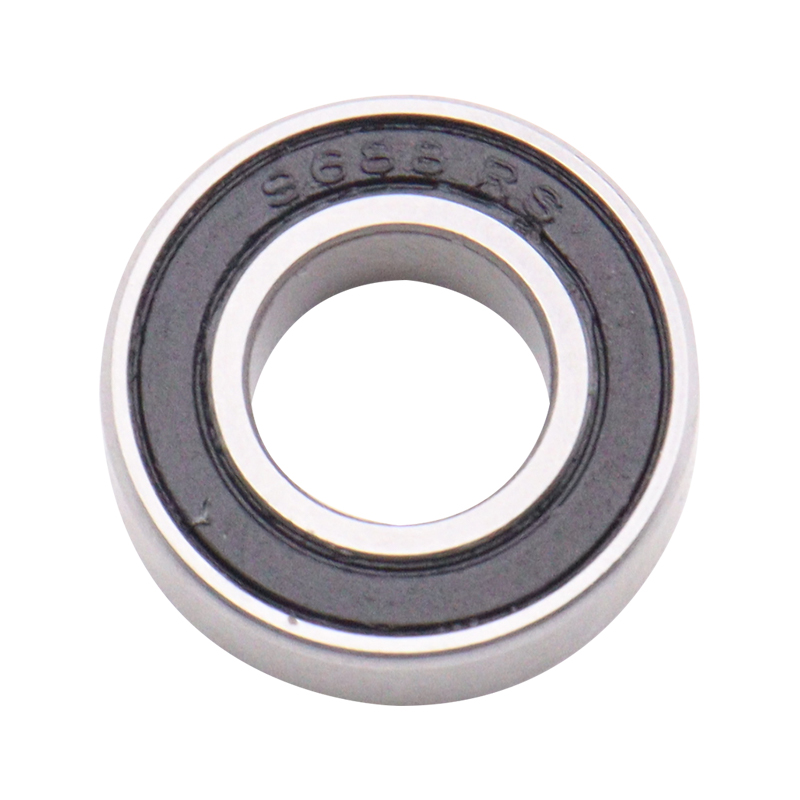
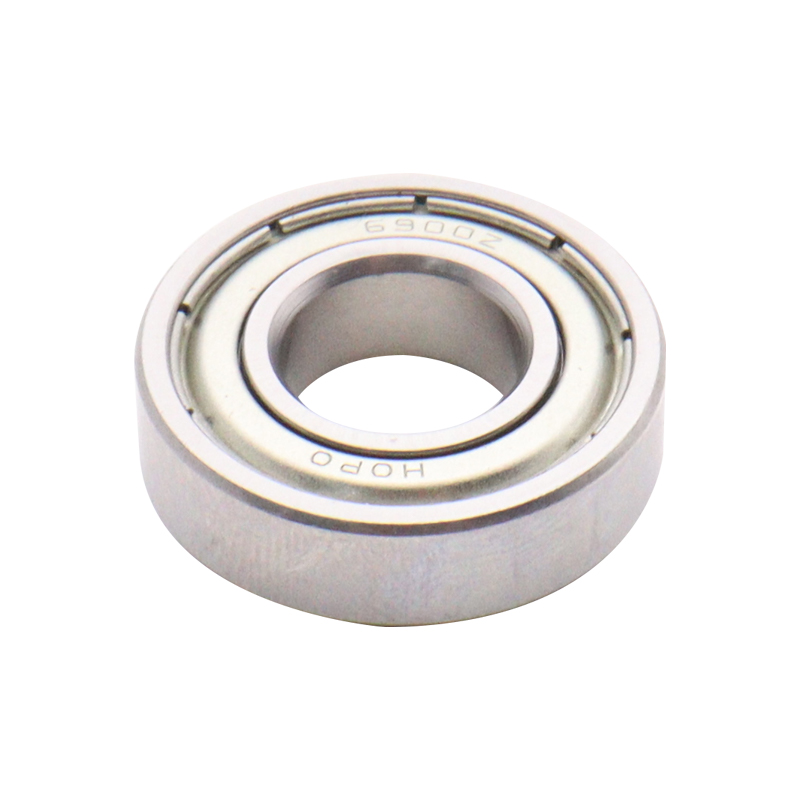

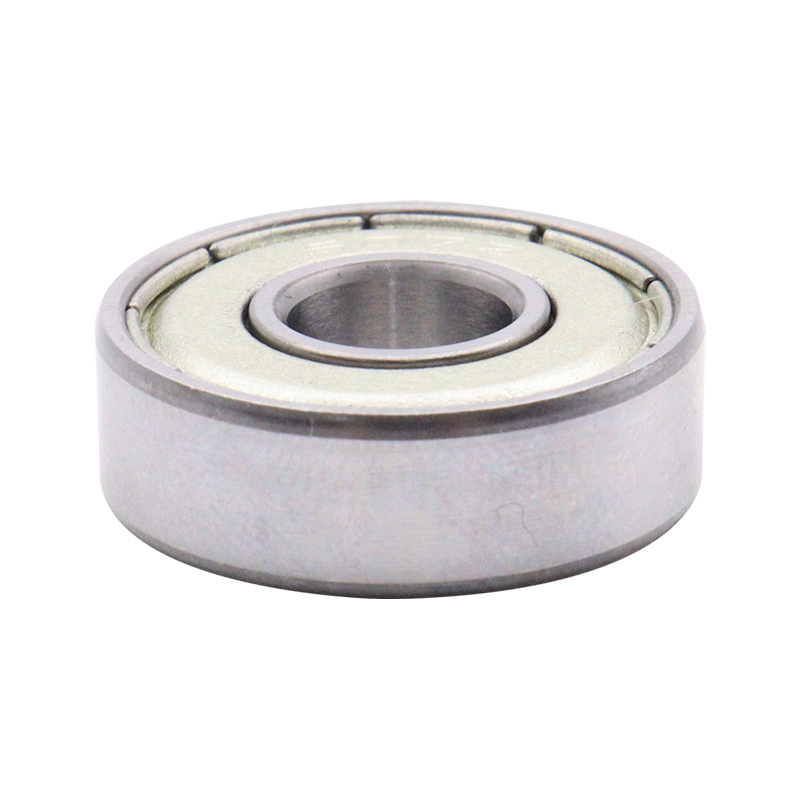
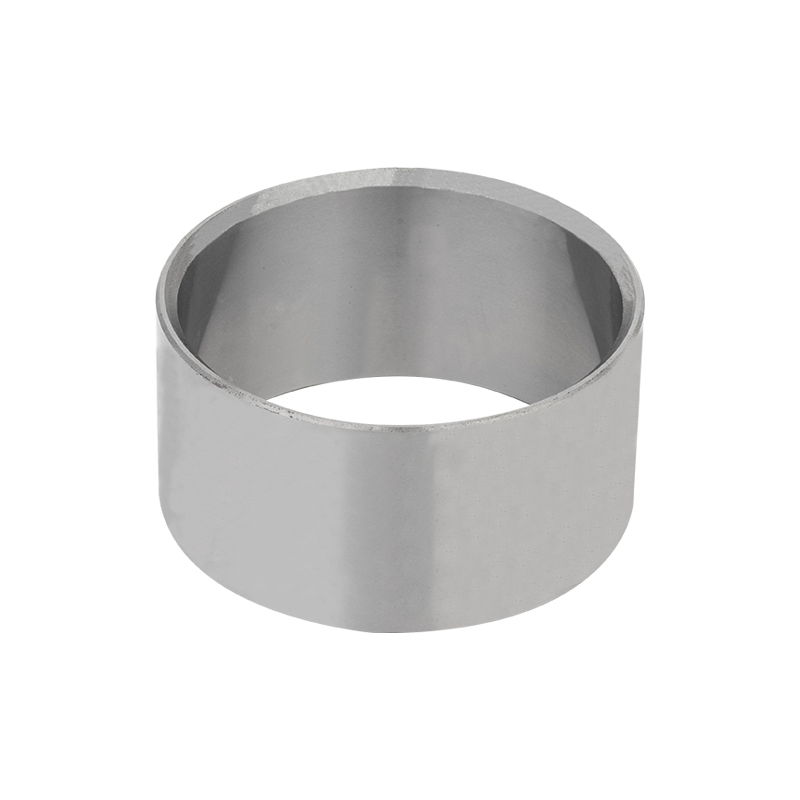
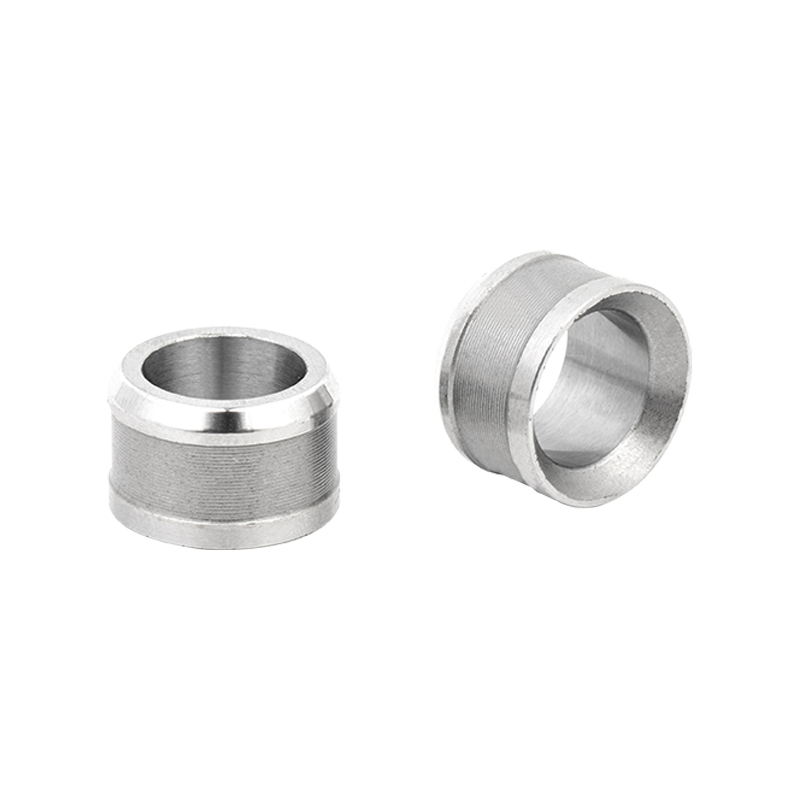
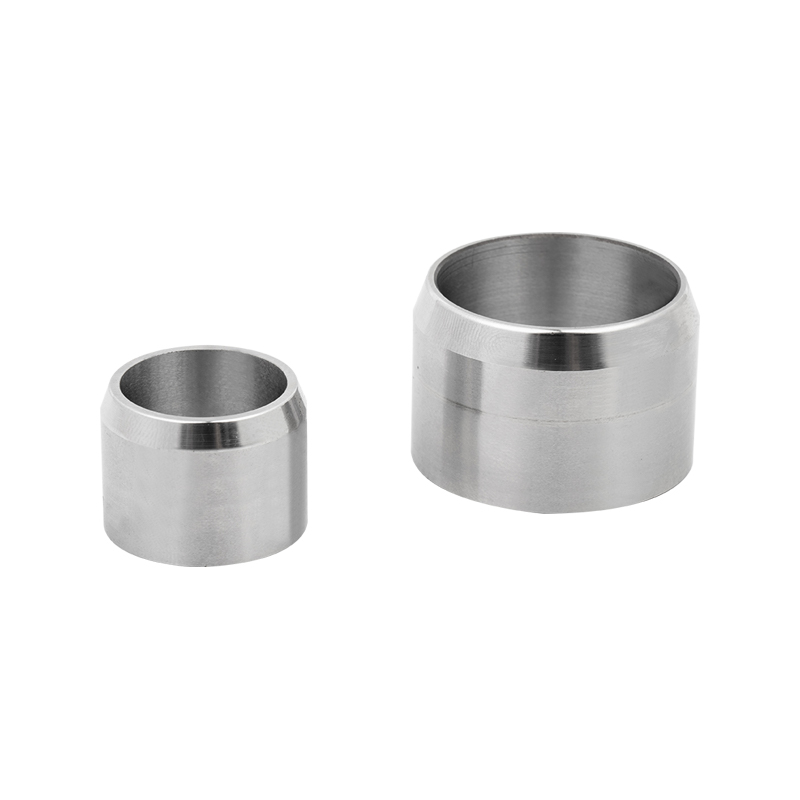
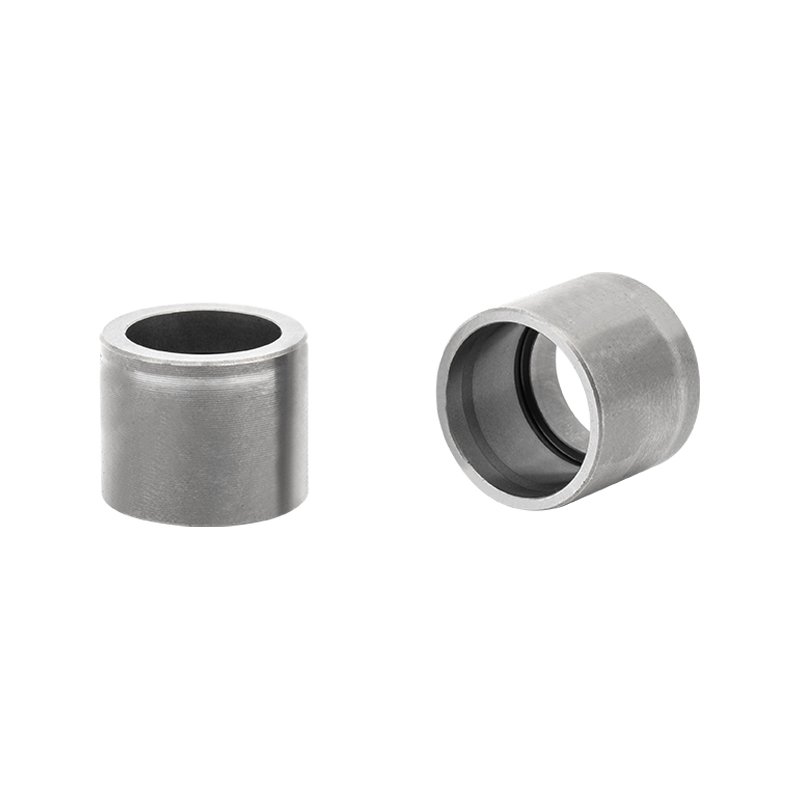
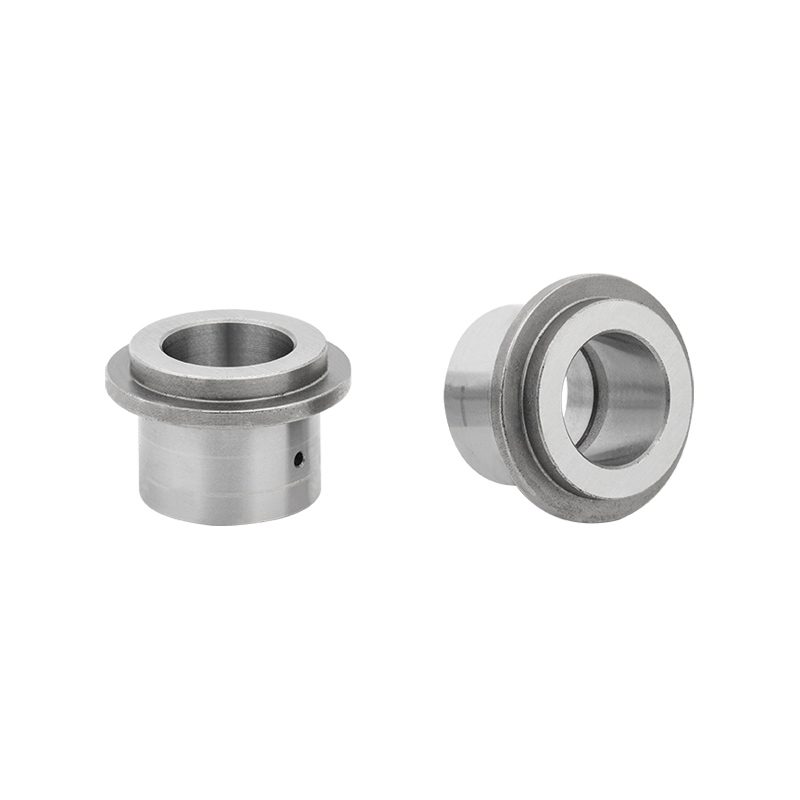

 Download Catalog
Download Catalog
